2
marzoA Provocative Rant About Robotic Hoover
The Evolution and Impact of Robotic Hoovers in Modern Homes
In the ever-evolving landscape of home innovation, couple of innovations have actually captured the public's imagination quite like robotic hoovers. These automated cleaning devices, when thought about a high-end, have become progressively prevalent in homes around the world. From their humble beginnings to the advanced models readily available today, robotic hoovers have actually revolutionized the method we think about and perform home tasks. This article explores the history, technology, benefits, and possible future developments of these impressive makers.
A Brief History of Robotic Hoovers
The concept of a robot vacuum cleaner reviews that might clean up autonomously dates back to the mid-20th century, when sci-fi authors and futurists began visualizing a future where household jobs would be performed by smart machines. Nevertheless, it wasn't up until the late 1990s and early 2000s that the first commercially practical robotic hoovers hit the market. The iRobot Roomba, introduced in 2002, is frequently credited as the leader in this field. Since then, various companies have entered the marketplace, each bringing its own unique features and technologies to the table.
How Robotic Hoovers Work
Robotic hoovers run utilizing a combination of sensing units, algorithms, and navigation systems. Here's a breakdown of the essential elements and technologies:
Sensors
- Laser and Infrared Sensors: These assist the robot vacuum reviews (iblog.iup.edu) identify challenges, walls, and drop-offs, guaranteeing it doesn't fall down stairs or get stuck.
- Dust Detection Sensors: These sensors identify areas with a high concentration of dirt and dust, enabling the robot vacuums best to focus its cleaning efforts.
- Cliff Sensors: These prevent the robot from falling off edges, such as staircases.
Navigation Systems
- Mapping Technology: Advanced models use mapping innovation to develop a detailed floor plan of the home, optimizing cleaning routes and preventing previously cleaned up areas.
- SLAM (Simultaneous Localization and Mapping): This technology permits the robot to browse and map its environment in real-time, making adjustments as it goes.
Cleaning Mechanisms
- Brush Systems: Most robotic hoovers utilize a mix of primary and side brushes to sweep and gather dirt and particles.
- Suction Power: The strength of the suction is vital for reliable cleaning, especially on carpets and in hard-to-reach locations.
- HEPA Filters: These filters are used in higher-end designs to trap allergens and fine particles, making them perfect for households with pets or allergy victims.
Connectivity and Control
- Wi-Fi Connectivity: Many modern-day robotic hoovers can be controlled through smart device apps, permitting users to set up cleanings, display progress, and receive alerts.
- Voice Control: Integration with smart home devices like Amazon Alexa and Google Assistant enables hands-free operation.
Advantages of Robotic Hoovers
The adoption of robotic hoovers has brought a number of advantages to modern households:
Convenience
- Automated Cleaning: Robotic hoovers can be set to tidy immediately, minimizing the need for manual intervention.
- Remote Operation: Users can control and monitor their robotic hoovers from anywhere, utilizing smart device apps or voice commands.
Efficiency
- Enhanced Cleaning Paths: Advanced navigation systems make sure that the robot covers the entire area efficiently, reducing the time and energy required for cleaning.
- Consistency: Robotic hoovers can carry out cleaning tasks consistently, keeping a high standard of tidiness without the requirement for human supervision.
Cost-Effectiveness
- Long-Term Savings: While the preliminary financial investment may be greater, robotic hoovers can conserve money with time by minimizing the requirement for expert cleaning services.
- Energy Efficiency: Modern designs are created to be energy-efficient, decreasing their effect on electrical energy costs.
Time-Saving
- Maximizing Time: By automating the cleaning procedure, users have more time to focus on other activities, whether it's work, leisure, or hanging out with family.
Allergic reaction Relief
- HEPA Filters: These filters can catch allergens and fine particles, enhancing indoor air quality and supplying relief to allergy patients.
Challenges and Limitations
Regardless of their lots of advantages, robotic hoovers are not without their challenges:
Initial Setup
- Mapping and Calibration: Setting up a robotic hoover can be time-consuming, particularly for larger homes or those with intricate designs.
- Barrier Identification: Users may require to reorganize furnishings or remove little challenge guarantee the robot can navigate easily.
Battery Life
- Minimal Range: Most robotic hoovers have a minimal battery life, which might need them to go back to their charging dock before finishing a cleaning cycle.
- Regular Recharging: Some designs may require to charge several times throughout a single cleaning session, which can be bothersome.
Cleaning Performance

- Dust and Debris Collection: While effective on hard floorings, some designs battle with deep-pile carpets or heavily stained locations.
- Maintenance: Regular cleaning of filters and brushes is necessary to keep ideal performance.
Personal privacy Concerns
- Information Collection: Some users might be concerned about the information collected by the robot, consisting of floor maps and user behavior patterns.
Future Developments
The future of robotic hoovers looks promising, with continuous improvements in technology and increasing integration with smart home ecosystems. Here are some potential advancements:
Enhanced Navigation
- AI and Machine Learning: Improved AI and machine learning algorithms will make it possible for robotic hoovers to much better comprehend and adapt to their environment, making them more effective and autonomous.
- 3D Mapping: Three-dimensional mapping technology will permit robots to navigate more intricate and messy spaces.
Better Cleaning Performance
- Multi-Functionality: Future designs might consist of extra features such as mopping and air filtration.
- Smart Sensors: Advanced sensing units will identify and tidy particular kinds of dirt and particles, such as pet hair or sticky compounds.
Enhanced Battery Technology
- Longer Battery Life: Advances in battery innovation will increase the range and period of cleaning sessions.
- Faster Charging: quicker charging times will decrease downtime and make the robots more easy to use.
Seamless Integration
- Smart Home Ecosystems: Robotic hoovers will integrate more seamlessly with other smart home gadgets, permitting collaborated cleaning and home management.
- Voice-Activated Commands: Enhanced voice recognition and natural language processing will make it easier to control the robot using voice commands.
Often Asked Questions (FAQs)
How do I set up a robotic hoover?
- Setting up a robotic hoover usually involves downloading a smartphone app, connecting the good robot vacuum to your Wi-Fi network, and producing a map of your home. Some designs might need extra calibration or setting up virtual walls to define cleaning areas.
Can robotic hoovers clean all types of floorings?
- The majority of robotic hoovers are created to clean up both hard floorings and low-pile carpets. Nevertheless, deep-pile carpets and heavily stained locations may require additional cleaning or a more powerful design.
How often do I require to empty the dustbin?
- The frequency of emptying the dustbin depends upon the size of your home and how frequently the robot cleans. As a general guideline, it's an excellent concept to clear the dustbin after each cleaning session to guarantee optimum efficiency.
Are robotic hoovers noisy?
- Modern robotic hoovers are created to be relatively peaceful, but the sound level can vary depending on the design and the strength of the suction. Some designs offer a "peaceful mode" for minimal disruption.
Can robotic hoovers climb stairs?
- Many robotic hoovers are not developed to climb stairs due to safety issues. Nevertheless, some designs can be set to stop briefly at the top of a staircase and resume cleaning on a various floor when manually moved.
Do I require to eliminate furnishings before utilizing a robotic hoover?
- While some furnishings might require to be relocated to permit the best robot vacuum cleaner and mop to tidy beneath, many designs are developed to browse around barriers. It's a great idea to get rid of small items that could restrain the robot's path.
For how long do robotic hoovers last?
- The life-span of a robotic hoover can differ, but numerous designs are created to last several years with proper maintenance. Regular cleaning of filters and brushes, along with keeping the robot's software updated, can extend its lifespan.
Are robotic hoovers worth the investment?
- For numerous homes, the benefit, efficiency, and time-saving advantages of robotic hoovers make them a beneficial investment. Nevertheless, it's important to consider your particular requirements and the functions offered by various models before making a purchase.
Robotic hoovers have actually come a long method given that their inception, changing the way we keep our homes. With their capability to clean autonomously, integrate with smart home systems, and offer constant outcomes, they use a range of advantages that make them an appealing option for numerous families. As technology continues to advance, we can anticipate a lot more sophisticated and easy to use models to emerge, further improving the cleaning experience. Whether you're a busy expert, a moms and dad, or merely somebody who values a tidy home, a robotic hoover might simply be the option you've been trying to find.
By checking out the history, technology, advantages, and future of robotic hoovers, this post aims to supply an extensive understanding of these innovative cleaning gadgets. For those thinking about a robotic hoover, the FAQs and lists of key functions can act as important resources in making a notified choice.


Reseñas